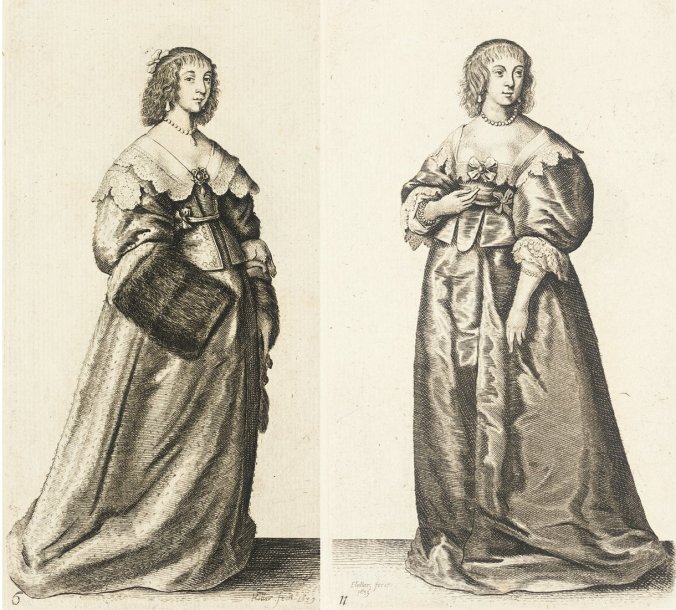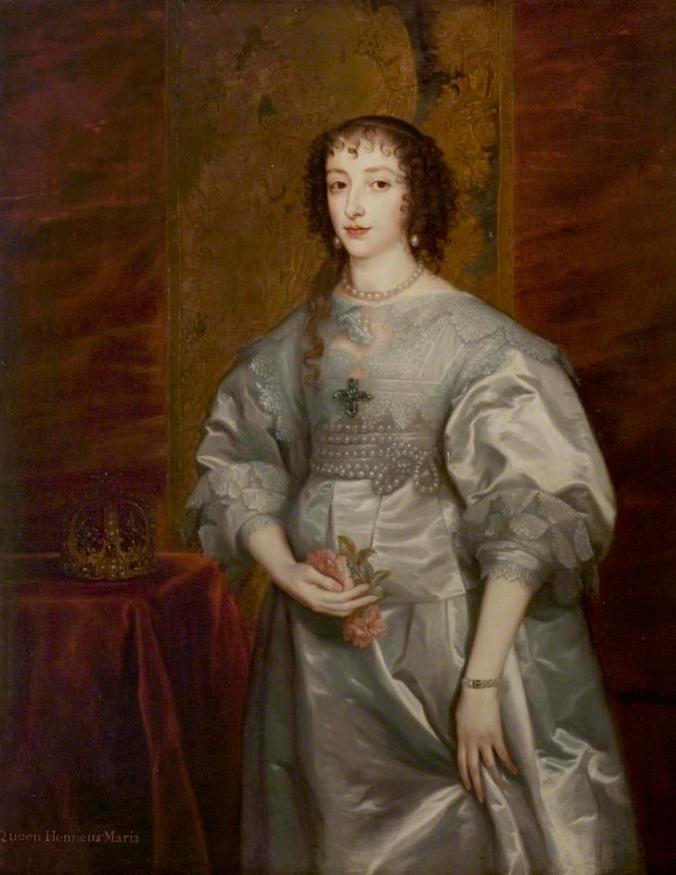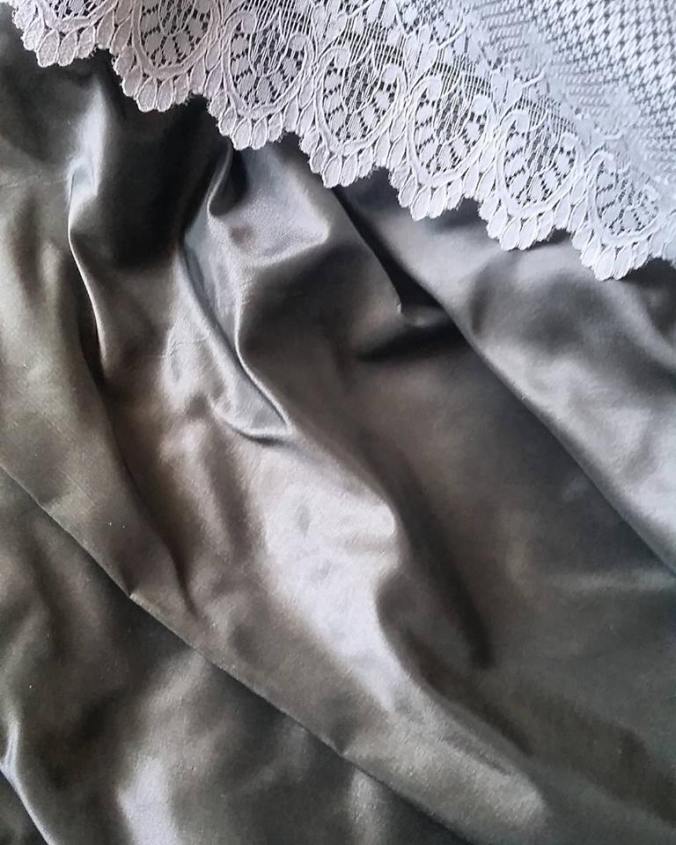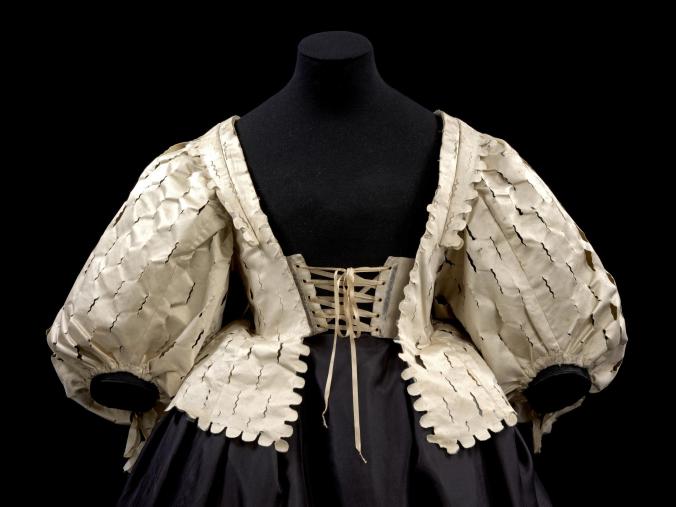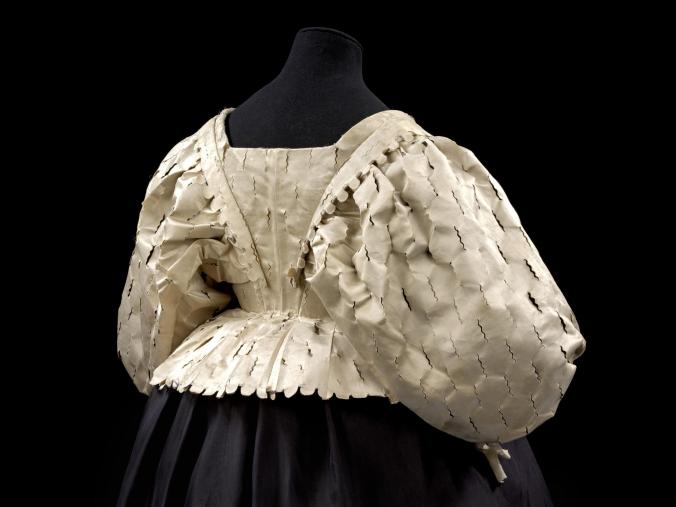Continuing on with my 17th century ensemble, I did not get as much done today as I had hoped due to mechanical issues related to my sewing machine. I can say that taking apart the tension assembly, re-calibrating it, and oiling all the moving parts has seemed to fix my problem for now… But I’m afraid that my trusty machine that I’ve used—nonetheless abused—as it was the first machine I learned on for the past 14 years, is now on borrowed time.
The bodice shell I have constructed is based off of the V&A example I posted about in the prior entry, which consists of two layers of canvas, carefully placed buckram pieces, and light boning. I have chosen to use heavyweight linen, a moderate amount of boning, and full pieces of buckram on each of the two front pieces, since I need a bit more support than the average woman of the 17th century. The interior of the bodice is machine-sewn, as I have less than a week left to finish this dress, and as someone with carpal tunnel issues, I am really not fond of hand-sewing garment interiors, with the obvious exception being nicely-laid linings. I believe that sewing—especially historical sewing should be accessible and enjoyed by all, and if a machine aids that process, then great!
It is unclear whether in the original example if the bodice was designed to be worn over a set of stays, but I am of the opinion that it would have been unnecessary; as minimal as the bones are in the original example, I think that an extra set of stays would have been overkill considering the short-waisted nature of this style of bodice makes heavy modification of the torso shape unnecessary. During the later years of the 1630’s and into the 1680’s, the tight-waisted nature of the dresses had stays integrated into the bodice foundation for many of the more formal gowns, but as not many surviving examples exist, we must look to primary sources and extant examples for evidence. One such surviving dress with full-boning is the famous silver tissue dress currently housed in the Fashion Museum in Bath.
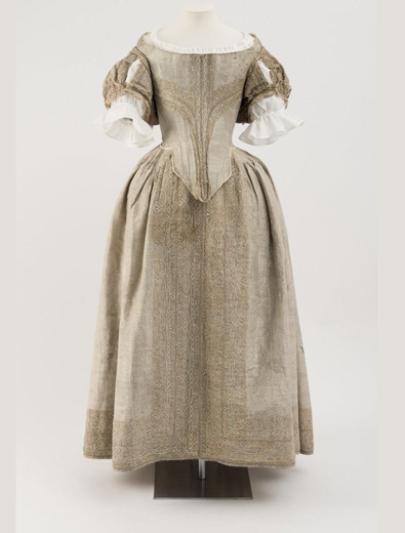
Silver Tissue Dress, 1660 (Image credit: National Maritime Museum/ Royal Museums, Greenwich/ Fashion Museum, Bath)
As an aside, I looooove how the National Maritime Museum used this dress in an exhibition related to Samuel Pepys’ diary. Read more about that here.
Today’s progress:

Boning channels sewn, pad stitching placed.
I have pad stitched down the front of the bodice in the empty gaps where no boning is placed; in the V&A example, there is similar pad stitching holding the buckram pieces down. But as I sewed the channels through all layers, I found that the stiffness of the buckram was fighting with the highly tensile linen layers and caused some bunching issues. The pad stitching helped tack the buckling down and turned the unsightly bubbling into an evenly distributed layer. I find myself slightly amused that this bodice—fully lined in buckram—holds the contents of the wearer in the same way that buckram used in book arts does for the contents of the book.
The bodice will be boned with extra-large cable ties, as I have found that the large cable ties and whalebone feel very similar to one another. When I first discovered this while examining original whalebone in bodices while working in museum collections, both myself and my wallet breathed a collective sigh of relief; my cheapness is period! The only caveat to zip tie boning is that I recommend replacing them every few years; plastic off-gases over time depending on environmental conditions and can discolor your fabric and anything it touches. I’ve yet to have this happen, but after working with various plastics in archives and museums, it’s amazing how synthetic materials can really do some nasty things. That being said, for costuming, I am team zip-tie all the way.
To prepare the cable ties for insertion, I recommend cutting them to length with a cheap pair of heavy duty scissors, donning a vapor mask/respirator, and sitting in a well-ventilated area (or outside if possible). Then, cut each of the corners to round out the shape, and hold the very tip of the edge over a flame. The plastic will quickly melt and soften the sharp corners and within about 15 or so seconds, it should be ready for placement within the stays!
Presto!
Tomorrow, I assemble and bind the bodice, cut and sew the silk exterior, and maybe start on the sleeves…


